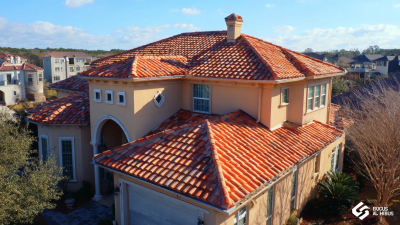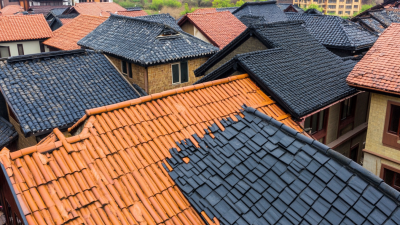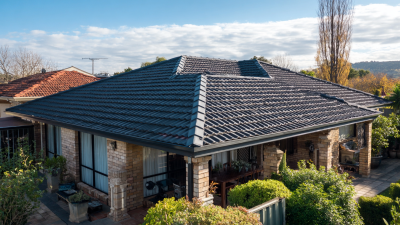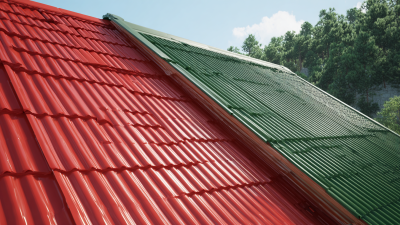
Leave Your Message
-
Phone
-
E-mail
-
Whatsapp

When it comes to building your dream home, one of the pivotal decisions you’ll make is regarding the roofing material, with tile roofs emerging as a popular choice due to their durability and aesthetic appeal. Tile Roof Cost can vary significantly, influenced by factors such as material type, installation complexity, and geographical location. According to the National Roofing Contractors Association, tile roofs tend to have a longer lifespan compared to other roofing materials, lasting upwards of 50 years with proper maintenance. Furthermore, a report by Remodeling Magazine indicates that homeowners can expect to recoup approximately 60-70% of their tile roof investment upon resale, underscoring its value. Understanding these cost factors, including initial investment and long-term benefits, is crucial in making an informed decision that aligns with both budget and vision for a sustainable, beautiful home.

When planning for the installation of a tile roof, several factors significantly influence the overall cost. One of the primary elements is the material choice. Tile roofs can be made from various materials such as clay, concrete, and slate, each varying in price. For example, clay tiles tend to be more expensive due to their durability and aesthetic appeal, while concrete tiles offer a budget-friendly alternative with decent longevity.
Another crucial factor is the complexity of the roof design. Roofs with intricate shapes, multiple levels, or unique features can require additional time and labor to install, leading to increased installation costs. Additionally, the geographical location can also play a vital role in determining the price. Installation costs may vary by region, affected by local labor rates and the availability of materials. Homeowners must consider these factors carefully to budget effectively for their dream tile roof.
When considering roofing materials for your dream home, understanding the comparative advantages of tile roofs versus other options is crucial. Tile roofs, known for their durability and aesthetic appeal, often outlast traditional asphalt shingles and wood roofs. While the upfront cost of tile can be significantly higher, homeowners frequently find that the long-term savings on maintenance and energy efficiency make it a worthwhile investment. Unlike metal or asphalt roofs, tile roofs provide excellent insulation, which can lead to lower heating and cooling costs over time.
On the other hand, materials like asphalt shingles might present a lower initial cost, making them a popular choice among homeowners on a budget. However, asphalt roofs typically have a shorter lifespan and may require more frequent repairs and replacements, ultimately increasing long-term expenses. Metal roofs, while highly durable, can be more expensive than other materials upfront, but they offer longevity and a modern aesthetic. In summary, while tile roofs require a higher initial investment, their longevity, energy efficiency, and reduced maintenance needs make them a strong contender against asphalt and metal options for homeowners looking to build their dream home.
When considering a tile roof for your dream home, understanding its lifespan and associated costs is crucial. Tile roofs, renowned for their durability, typically last between 50 to 100 years, far exceeding the lifespan of traditional asphalt shingles, which averages around 20 years. This longevity can significantly impact overall roofing costs. While the initial installation of tile roofs can be higher, often ranging from $10 to $20 per square foot, homeowners benefit from reduced long-term maintenance costs and the need for less frequent replacements.
Moreover, the material choice plays a significant role in the roof's insurance and energy efficiency. High-quality tiles offer better resistance against harsh weather conditions, proving vital in regions prone to severe storms. For example, roofs with Class 3 or Class 4 high-impact-resistant materials can withstand hail damage better, further reducing replacement frequency. This investment in tile not only enhances the aesthetic appeal of a property but also contributes to its overall value by providing a reliable protective barrier, which could be financially advantageous in the long run.
When considering a tile roof for your dream home, it's crucial to factor in not just the upfront installation costs but also the ongoing maintenance and repairs. Tile roofs are renowned for their durability and aesthetic appeal, yet they do require regular attention to ensure longevity. The budgeting for maintenance should include routine inspections to check for cracks, debris accumulation, and any potential water damage that can arise from broken tiles. Establishing a schedule for these inspections can prevent minor issues from escalating into costly repairs.
Budgeting for repairs can be particularly variable, depending on the severity of the damage. It’s advisable to set aside funds specifically for unexpected repairs, as weather events can often lead to unforeseen issues. Additionally, hiring experienced professionals for repairs is essential to guarantee the work meets safety and quality standards, which can influence overall costs. By planning for maintenance and repairs, homeowners can enjoy the benefits of a tile roof while avoiding financial strains due to neglected upkeep.
When considering installing a tile roof for your dream home, it’s essential to look beyond the initial costs and factor in hidden expenses that may arise during the project. According to the National Roofing Contractors Association (NRCA), the average cost per square foot for tile roofing ranges from $10 to $20, but this does not include crucial elements like underlayment, flashings, and potential structural reinforcements, which can significantly raise your total expenditure. A report from Remodeling magazine highlights that homeowners could see unexpected costs that exceed 10% of their budget due to these additional requirements.
Tips: Before starting the installation, obtain a detailed estimate that includes all potential costs, including labor, materials, and necessary reinforcements. It's wise to set aside an extra 15-20% of your budget to account for unforeseen expenses that may arise during the process.
Additionally, consider the long-term benefits of investing in a quality tile roof, which often has a lifespan of 50 years or more. The upfront costs might be high, but the durability and minimal maintenance requirements could save you money over time. Establishing a comprehensive understanding of these hidden costs can aid in achieving the home you’ve always dreamed of, with an aesthetic and functional roof that adds significant value to your property.





